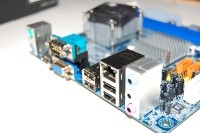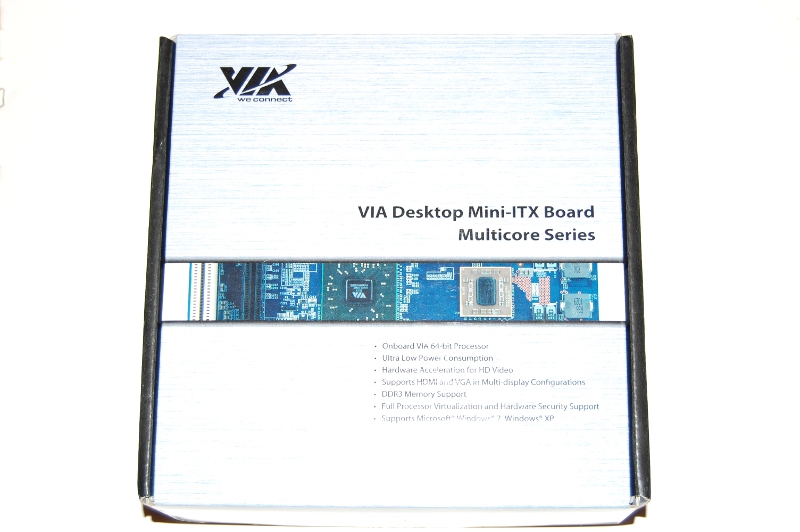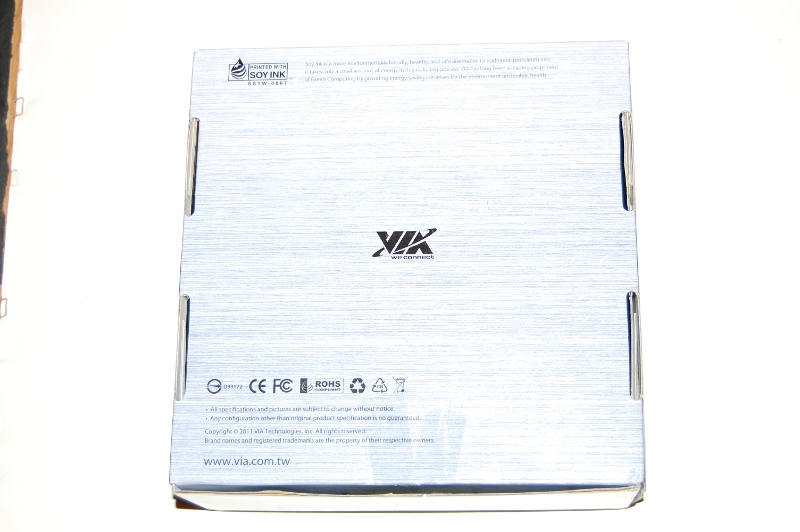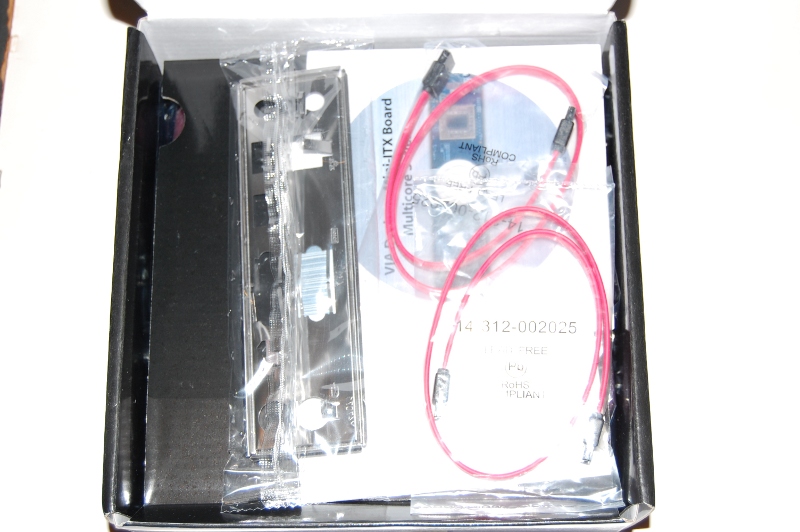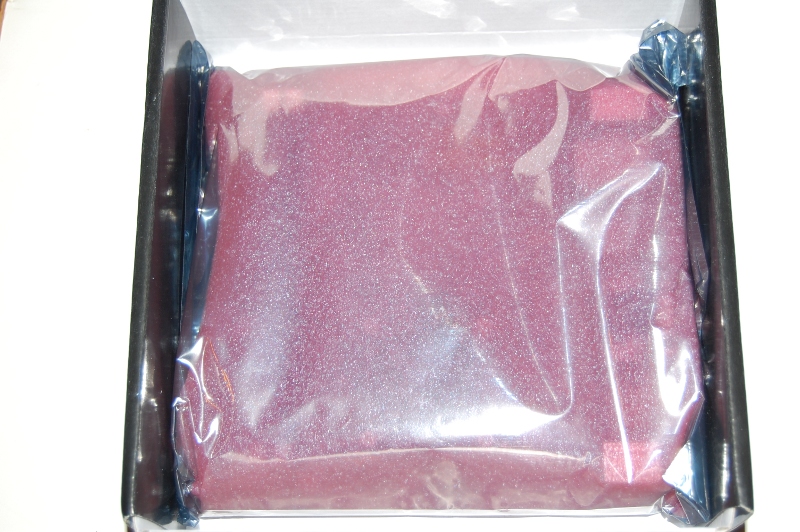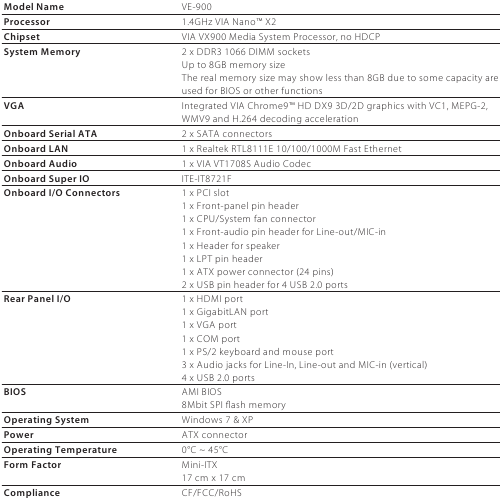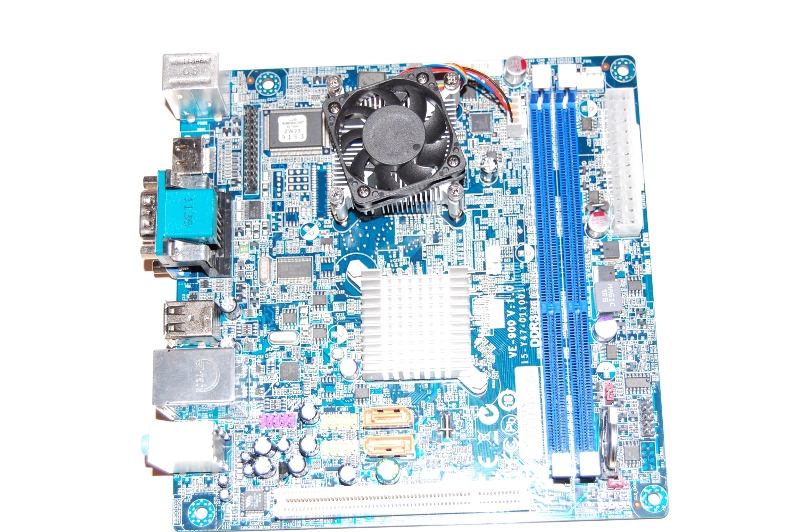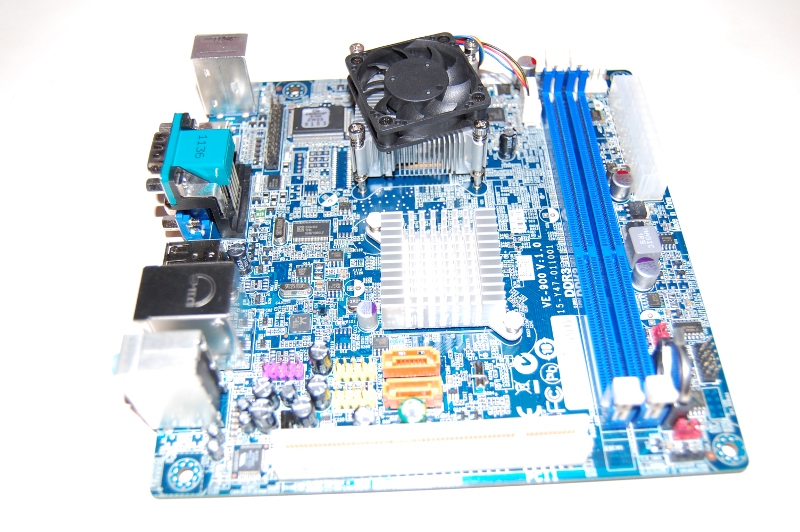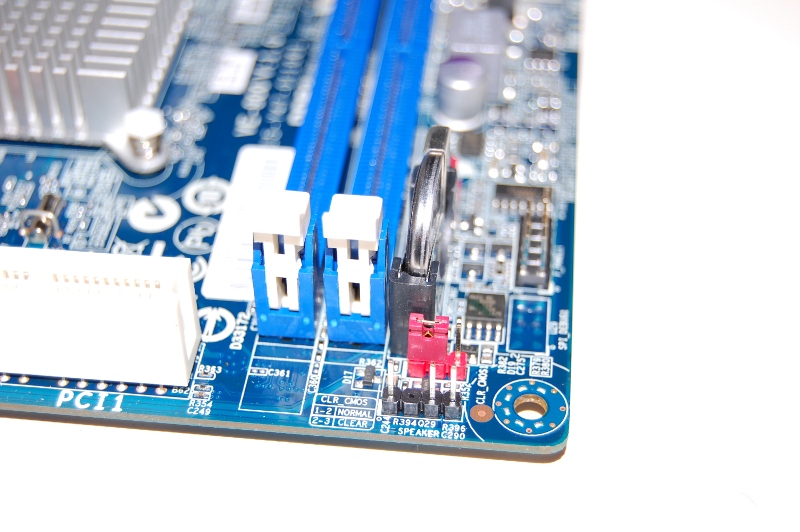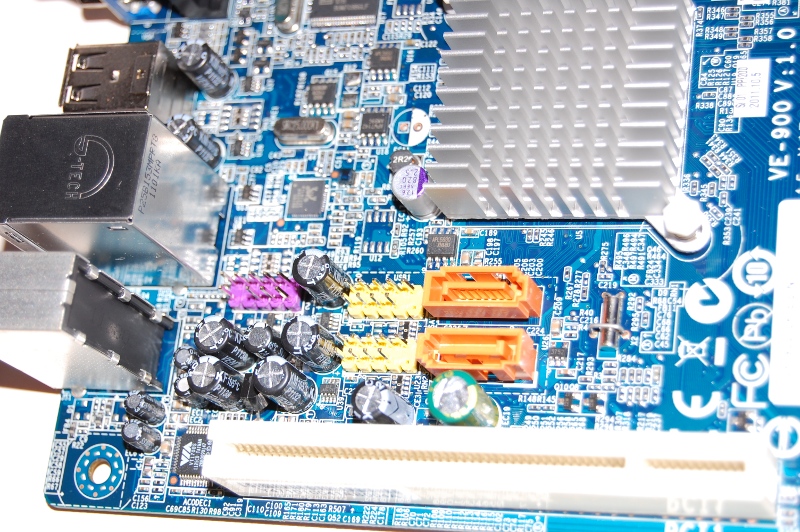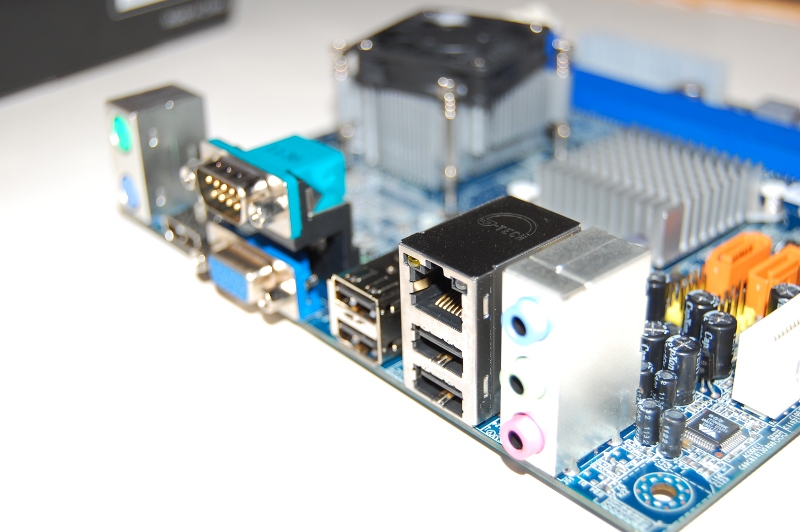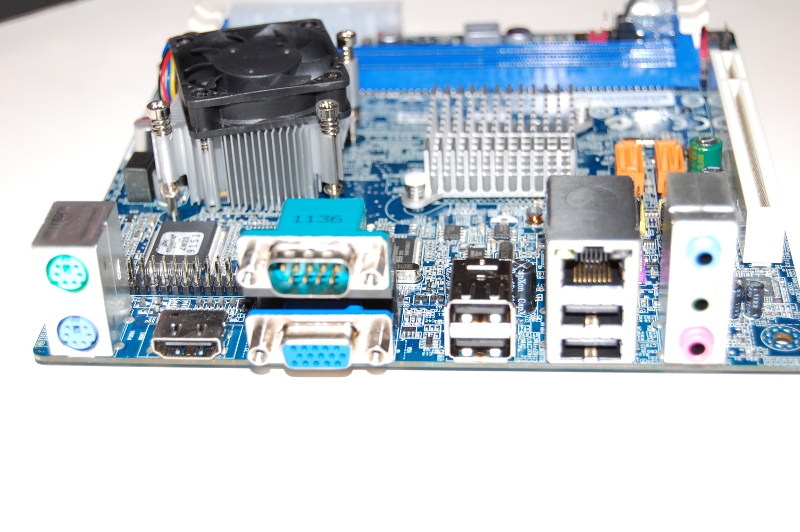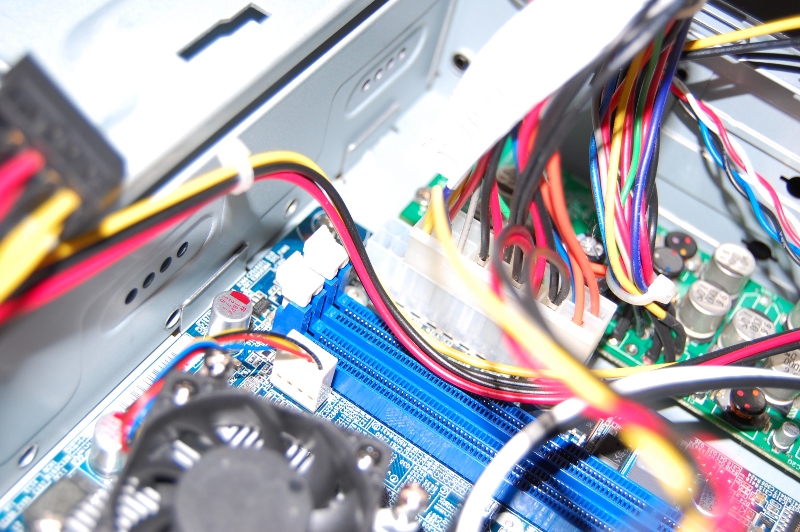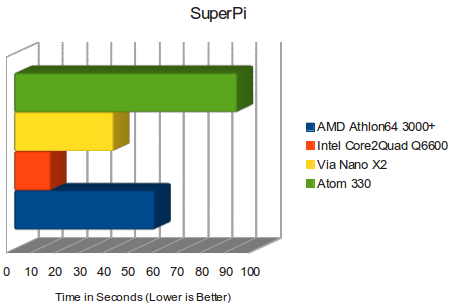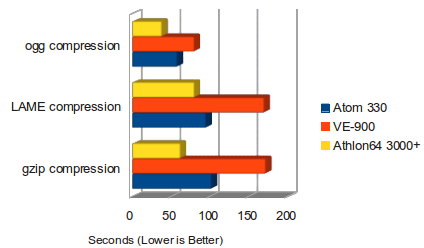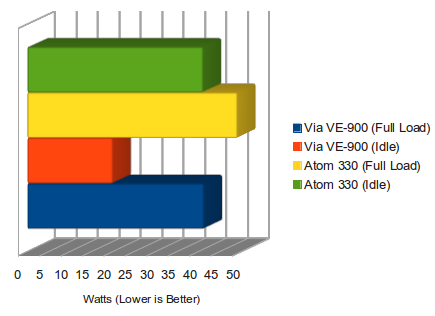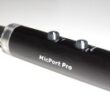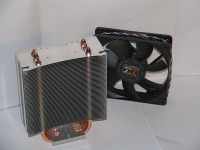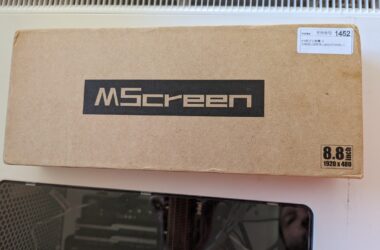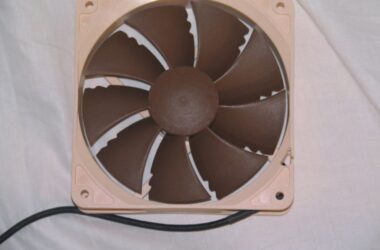Introduction
Ten years have passed since Via announced the Mini-ITX form factor, and I've been a fan of the compact motherboard platform since. To mark the 10 year anniversary, Via announced their latest product based on the Mini-ITX standard, the VE-900. Sold for only an affordable $89 USD, it promises to deliver a high-performance multimedia experience in a small package.
Powering the VE-900 is Via's own dual-core Nano X2 processor clocked in 1.4GHz. The Nano X2 is Via's first 64-bit dual-core processor, and it is meant to compete against Intel's Atom CPUs in both performance and power consumption. Intel's family of Atom processors are known for their low power consumption, but they aren't known for their performance nor their ability to deliver high-definition content unassisted. The VE-900 also houses Via's latest VX900 chipset, allowing this board to support up to 8GB of DDR3 RAM, and provide excellent hardware acceleration for the latest video formats in resolutions up to 1080p.
Via has been very friendly with the Linux community in the past, and most of their products tend to work in Linux out-of-the-box. Will Via's latest offering follow suit, and does it in fact provide superior performance against Intel's family of Atom Processors?
Packaging
The Via VE-900 came to me in a fairly standard Mini-ITX cardboard package. The outside of the box is reminiscent of Apple's brushed aluminum interface. The front of the packaging has a thin-strip of the motherboard displayed in the center, hinting at what's inside. Under this are a list of the features the VE-900 offers.
The rear of the packaging has Via's logo front-and-center, and top or bottom are additional product / packaging information.
Inside, I first found two SATA cables, the backplate, a manual, and a driver CD for Windows. Under these was the VE-900 itself wrapped in an anti-static bag.
Features and Specifications
Key Features
- High-performance 64-bit VIA Nano™ X2 dual core processor
- Hardware acceleration for VC1, H.264 and WMV9 HD video
- On board HDMI and VGA ports
- Support for up to 8GB of DDR3 1066 DIMM
- Support for 2 SATA
- PCI slot expansions slot
Specifications
Appearance
At first glance, the Via VE-900 looks like any other Mini-ITX board built on a blue PCB board. However, upon closer examination, there are several things to notice. First, the size of the CPU and the heatsink and fan. I'm not sure I've seen a heatsink-fan this small since the days of the original Pentium CPUs. The overall size of the CPU is also impressive, appearing in a form factor similar to that of the Intel Atom CPUs.
The chipset controller has a similar, small heatsink attached to it. To the right are also two full-size DDR3 slots. The only unsatisfactory item I found during my initial inspection was the inclusion of a PCI slot, rather than a PCI-Express slot.
The other features of the board include two SATA2 headers, expansion for an additional four USB 2.0 slots, and HD Audio headers.
On the rear, the board has more than enough connectors for any media center, including HDMI.
Installation
After situating the board and components inside a suitable case, I downloaded the latest DVD or Kubuntu (11.10 at the time of the writing), burned it to a DVD, and began installation. Kubuntu's installation process ran without a hitch, but I was still a little skeptical that there still going to be something I needed to install on the system after installation.
After booting into KDE for the first time on the machine, I was greeted by a pleasant surprise: Desktop Effects had already been enabled, and my desktop was being rendered by way of OpenGL. This was the most promising discovery yet! And, of course, all in magnificent 1080p on a 24" Asus Monitor via the VE-900's HDMI connection. The onboard high-definition audio also was picked up by Ubuntu without an issue.
With everything working out of the box, I went about installing a few desktop applications, as well as the software I intended to benchmark the board with.
Test Setup
While setting the VE-900 up for testing, I catered to its Mini-ITX form factor, but also made sure that the mainboard would be used to the fullest. I'm not sure I know anyone else who has paired 8GB of RAM up with a Mini-ITX motherboard.
The main recommended use of the VE-900 is in the home theater, so one of the things I really want to check with this board is whether or not it has the ability to play back 1080p video without any stuttering. I also wanted to briefly examine the VE-900's 3D abilities, power consumption, and the number crunching behind the Nano X2 CPU. Below is the components I used for teseting:
- Via VE-900
- 8GB (2x4GB) Patriot DDR3-1066 RAM
- Gigabyte GZ-SPIM51-P0B Mini-ITX Case and 65W Power Supply
- Western Digital Caviar Black 500GB SATA Hard Drive
- Asus 24x DVD+/-RW SATA Drive
Movie Playback
I decided to use VLC as my movie player for these tests, as it has support for most video formats out-of-the-box. I figured the best formats to test high-definition video playback would be MKV, H.264, and YouTube. I've had poor experiences with video playback on low-power processors in the past, but was really hoping that the VE-900 would pull through. The unfortunate part about these playback tests is that during the time of this writing, the only video recorder I had access to was currently broken. With that, trust us
on these!
I started with an H.264 file I found at this website. Like most high-definition clips, it was rather large in size (roughly 120MB for about two minutes of video). After the download completed, I queued the file up in VLC and hit play. While VLC wasn't in fullscreen mode, the video looked a little choppy. After switch to fullscreen so that video was no longer scaled, playback smoothed out and looked just as good as it would on my Core i7 machine.
I moved on to the MKV file next, choosing a movie trailer from those available on DivX's website. The results mimicked those of the H.264 playback: slightly choppy when the video was scaled, but smooth sailing in fullscreen mode.
I honestly wasn't sure what to expect while attempting to play a 1080p video from Youtube. Flash has always had performance issues in Linux (amongst other operating systems), so I didn't have high hopes for being able to play a 1080p clip. Two of my favorite trailers that can be found in 1080p on Youtube are Tron: Legacy and the Dark Knight. Unable to choose which I wanted to play back, I opted to play both.
Youtube defaults to 360p playback, which worked as expected. Switch to 1080p and fullscreen lead to a little more buffering, but sure enough video playback was smooth. I will note here that I had programs installing in the background, and the video did get a little choppy whenever there was a reasonable amount of hard drive activity occurring.
I was impressed. I never would have been able to play these files on an Intel Atom-powered system without the help of a discrete graphics solution (read: higher power consumption!). We'll post an update on this as soon as we get our grubby hands on a working video camera!
Gaming Performance
My obsession with computers goes back to the days when I was child and just had to play another game of Tanks on Atari. Every time I get my hands on a new piece of hardware, I have to know if I can play games on it! Our typical gaming benchmark here at BIOSLEVEL.com used to be Unreal Tournament 2004, as it was at one point of the most technologically advanced gaming engines available on Linux.
Fast-forward a few years, and now there are several newer gaming engines that do things a little better than the Unreal Engine 2 did. Nexuiz and Unigine-based games make up for a fair portion of the market. With my preference being first-person shooters, I decided to test Nexuiz first…
…or not. While the game loaded to the menu screen relatively quickly, the VE-900's GPU just couldn't handle the game. It took me about two minutes to move the cursor from the center of the screen over to the "Close" button. I was hoping for a little more luck after the 1080p playback success, but this board is being marketed towards multimedia uses rather than gaming. Of course, one can always load up a game of chess or solitaire.
Via's Nano X2 Processor – Performance and Power Consumption
Intel and AMD have been playing the multi-core game for years now, and the 64-bit game for even longer. However, the Nano X2 marks Via's first foray into both of these markets. I've owned a few Via products over the years, and I've always enjoyed being able to build a capable NAS or router that also consumed far less power than the computers I built for gaming.
Truly, Intel's Atom processors invaded a space that Via has always catered to in the past. Judging by what I've seen up to this point, it looks like the Nano X2 is ready to take that market back. To test the processing power of the Nano X2, VX900 chipset, and RAM, I tested with SuperPi, calculating Pi to a little over a million decimal places. I was very surprised by the result, so I included several other processor's scores to show where the Nano X2 stood in the grand scheme of things.
The VE-900 held its own ground in our SuperPi testing, beating a desktop-class 64-bit single-core CPU with a higher clock frequency. To look at this a little closer, I also used the Phoronix Test Suite to look at how fast the Nano X2 was able to compress different types of files.
Again, the VE-900's Nano X2 holds up against the Atom. The question no one thinks about when it comes to computing power deals with who's going to pay the electricity bill. Unless you're playing the latest 3D games on your HDTV, there's little need to purchase multi-core CPUs and dual-bay videocards. I was impressed while monitoring the VE-900's power consumption through these tests.
Via manages to pull ahead of Intel again. While idle, the VE-900 uses nearly 50% less power than the Atom-based system. Considering the Netbook and Desktop-class Atoms can sometimes use as much power as early dual-core processors, the VE-900's power consumption is even more impressive.
Final Thoughts and Conclusion
Where was Via when the netbook craze started? AMD came late to the game, but still profitted overall. Its a shame that Via's "OpenBook" never took off when originally announced. It would be phenomenal to see netbook competitors based off of Via's Nano X2 CPU.
During my testing of Via's VE-900, I was slightly blown back. I'm not sure I've ever seen a Via chip outperform a competitor from Intel, but the VE-900's 1.4GHz Nano X2 processor accomplishes this without breaking a sweat or needing overclocked. Paired with 8GB of RAM, I found the performance from the VE-900 to rival that of desktop systems from only a few years ago, all while using a fraction of the power.
Via's marketing the VE-900 towards the enthusiast or do-it-yourself multimedia crowd, and thats where I see it fitting in perfectly. The gaming performance isn't quite there, but I was able to watch a variety of video clips in a full 1080p without a problem — granted that I didn't have many other applications running in the background.
At $89, there are plenty of applications that go above and beyond movie playback for this mainboard. With plenty of USB ports and a single PCI slot, there's room to add additional ethernet ports, TV tuners, and more. The VE-900 may make for a perfect base unit for a low-powered router or DVR. Alternatively, it would make for a great computer for someone that just casually checks their e-mail and browses Youtube.
The biggest issue I have with the VE-900 is the lack of a PCI-Express port. This may simply be my own pet peeve, but PCI-Express has been out for years, and yet motherboards are still manufactured with PCI slots. If the VE-900 had come with a PCI-Express slot, it would be easy to add a low-power, discrete graphics card to help with gaming performance, amongst other areas. But the lack of the PCI-Express slot definitely is not a deal killer for the unit.
Via has a fantastic enthusiast product on their hands with the VE-900. And for the Linux enthusiast, its supported out-of-the-box by Ubuntu and probably many other distributions. While you're not getting amazing performance from this unit, it is more than enough for the day-to-day computer usage, and would make for an ideal, low-power home theater PC.
Rating:
9 / 10



